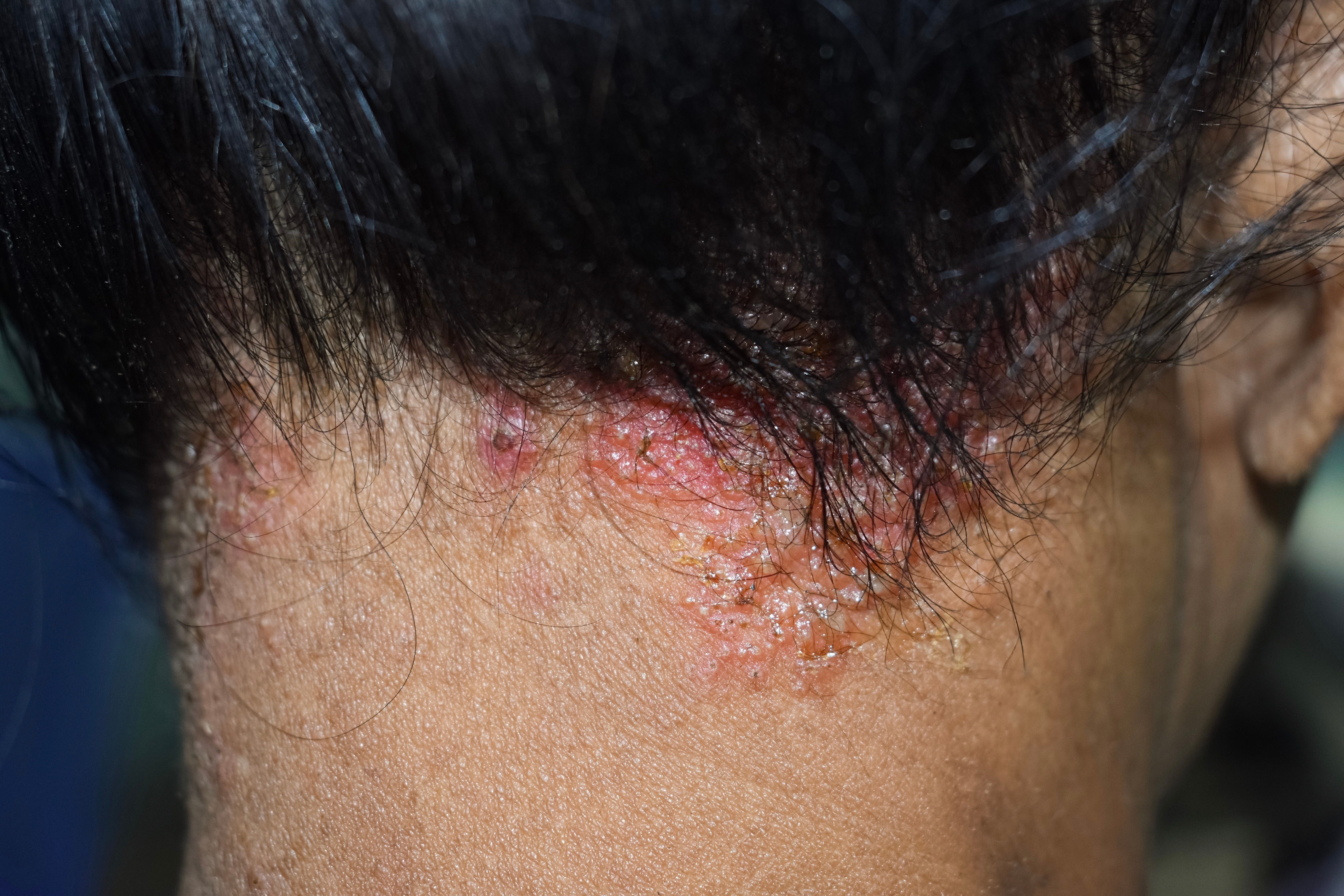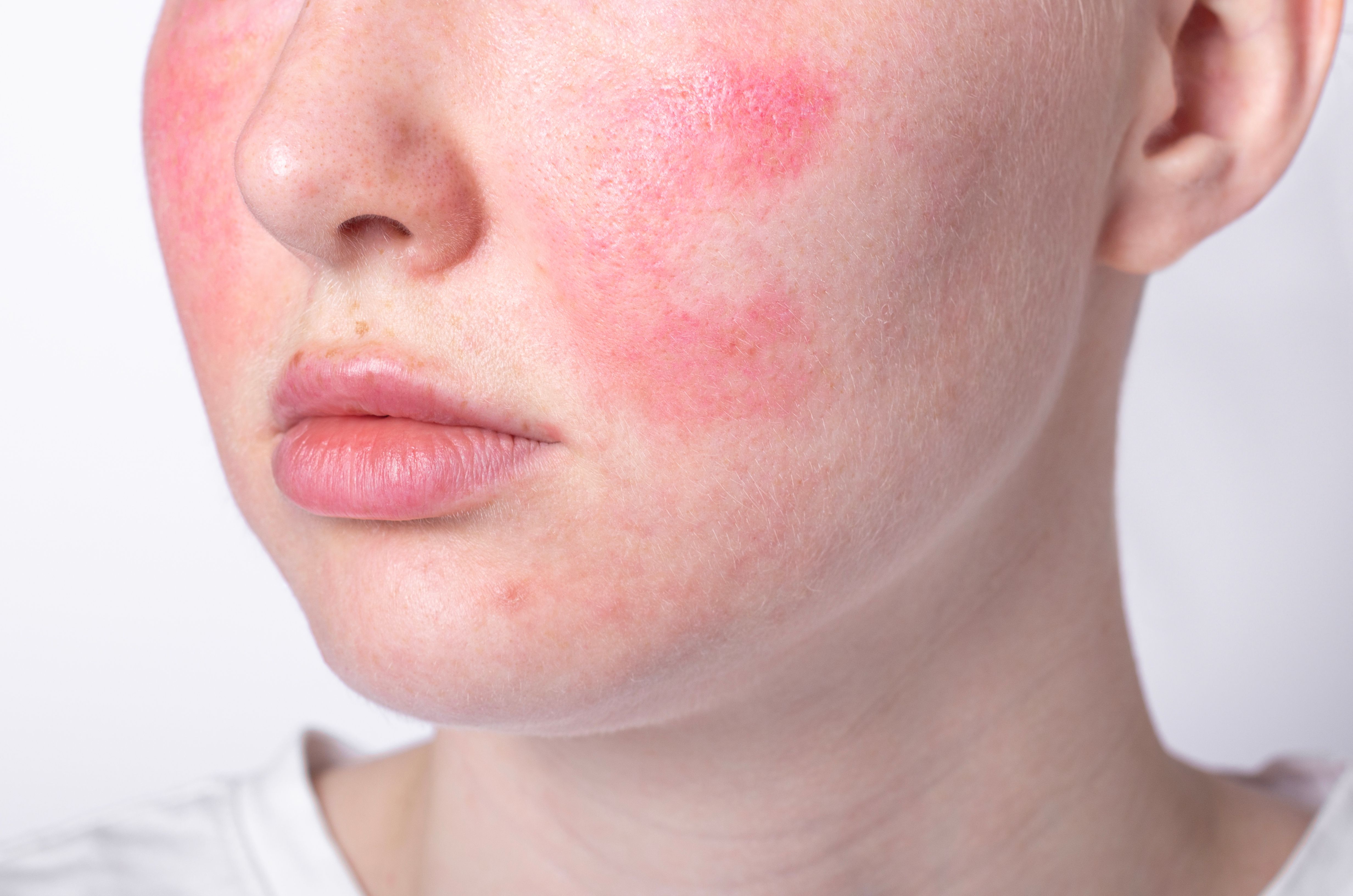- Acne
- Actinic Keratosis
- Aesthetics
- Alopecia
- Atopic Dermatitis
- Buy-and-Bill
- COVID-19
- Case-Based Roundtable
- Chronic Hand Eczema
- Chronic Spontaneous Urticaria
- Drug Watch
- Eczema
- General Dermatology
- Hidradenitis Suppurativa
- Melasma
- NP and PA
- Pediatric Dermatology
- Pigmentary Disorders
- Practice Management
- Precision Medicine and Biologics
- Prurigo Nodularis
- Psoriasis
- Psoriatic Arthritis
- Rare Disease
- Rosacea
- Skin Cancer
- Vitiligo
- Wound Care
News
Article
Skin Responses Differ Among Patients With Seborrheic Dermatitis and Rosacea
Author(s):
Skin responses to lactic acid sting and capsaicin tests varied, according to researchers.
In a cohort of female patients with seborrheic dermatitis and rosacea, skin responses to lactic acid sting (LAST) and capsaicin tests (CAT) differed.
ZayNyi/AdobeStock

Researchers conducted a study1 with the hope of assessing cutaneous responses among patients with both conditions. They cited similarities between the 2, noting that each is accompanied by symptoms such as sensitive skin; despite this, cutaneous responses to LAST and CAT are unknown in these indications. In conducting the assessment and comparison, researchers also sought to compare basal epidermal permeability barrier function and erythema in response to both tests.
Individuals with a seborrheic dermatitis (n=20) or rosacea (n=60) diagnosis who were patients at a single center, a hospital dermatology department, were included in the study, along with 40 otherwise healthy patients who served as a control group. All participants had been patients of the hospital between October 2020 and October 2021.
Patients with rosacea were required to be at least 14 years of age who had abstained from topical treatments for at least 1 month prior to inclusion and presented primarily with symptoms such as erythema and flushing of the skin. All participants, including otherwise healthy controls, did not have any other facial skin disorders or inflammatory dermatoses that may interfere with the assessment of skin response. They were asked by researchers to refrain from the use of skin care products and topical medications at least 12 hours prior to testing.
Researchers opted to exclusively enroll female patients, noting the variations of epidermal function that coincide with gender. Furthermore, they argued that because females are more likely than males to seek dermatologic or skin care, the study ought to be comprised solely of female participants.
Prior to testing, all participants washed their faces with warm water and dried the skin using sterile gauze provided by researchers. After a 15-minute wait period, researchers measured patients’ baseline erythema and transepidermal water loss (TEWL).
After undergoing LAST, participants ranked their level of sting sensation at 0, 2.5, and 5 minutes post treatment on a 4-point scale, with 0 indicative of an absence of stinging sensation and 3 representing severe stinging. Combined 2.5 and 5- minute scores that were equal to or greater than 3 were considered lactic acid sting test positive (LASTP), while anything lower than 3 was deemed lactic acid sting test negative (LASTN).
A 5-point scale was used for the execution of the CAT, with 1 point being indicative of a barely perceptible burning sensation and 5 points described as pain. Sensations of 3 points or higher lasting for more than 30 seconds fell under the category of CAT positive; anything else was considered CAT negative.
As a result, researchers found that the rate of LASTP and CAT positive patients were higher in those with rosacea than either seborrheic dermatitis or controls. Oppositely, the rate of LASTN and CAT negative patients was significantly lower in patients with rosacea than the other patient groups. Furthermore, baseline TEWL scores were higher among patients with rosacea, and LAST and CAT responses were positively correlated with rates of TEWL.
“Together, these results demonstrate that subjects with rosacea display higher TEWL rates, which likely contribute to the high positive rates and severity of LAST and CAT,” according to Hu et al. “The present study demonstrates the cutaneous responses to LAST and CAT differ between individuals with rosacea and seborrheic dermatitis, likely due to the differences in the neurovascular hyperreactivity and epidermal permeability barrier function between these two skin conditions. These results further suggest the importance of improving epidermal permeability barrier in the management of skin conditions with sensitive skin symptoms such as rosacea.”
Reference
- Hu M, Tu Y, Man M, et al. Rosacea and seborrheic dermatitis differentially respond to lactic acid sting and capsaicin tests in Chinese women. J Cos Dermatol. Published online July 19, 2023. doi:10.1111/jocd.15878
Newsletter
Like what you’re reading? Subscribe to Dermatology Times for weekly updates on therapies, innovations, and real-world practice tips.














